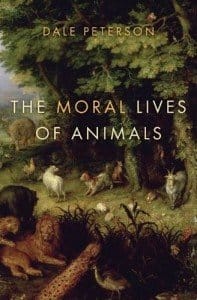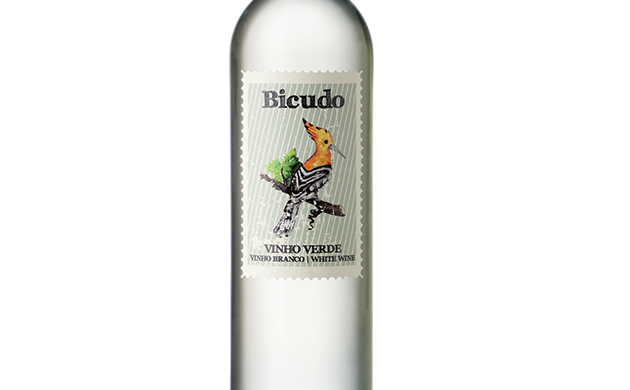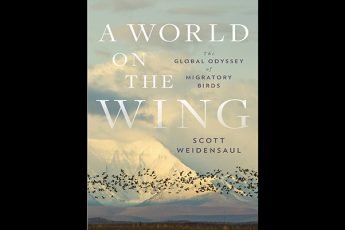Philosophy and I have always had a rather fraught relationship. I love grappling with big ideas, but dislike the tendency to extrapolate endless sky-bridges of thought and constantly redefine terms.
You’d think, then, that applying science to philosophy by studying the evolutionary underpinnings of thought and behavior across species would be right up my alley. And it is. Unfortunately, by the nature of the problem, the history of the young field is littered with examples of researchers allowing their subconscious biases — or worse, their conscious ones — to influence how they read the data. The temptation is even stronger for popularizers, who have to condense and choose a focus that will appeal to the book-buying public.
With those caveats in mind, I took up Dale Peterson’s The Moral Lives of Animals with hope and not a little trepidation. For the most part hope won, but it was not a flawless victory.
Peterson’s big idea, succinctly stated on page 68, is as follows: “I believe that morality appears as a predictable response to group living, and we can therefore expect to see clear signs of full moral behavior appearing much, much earlier than the recent start of human evolution.”
If one buys the idea of evolution influencing behavior at all, it’s a theory that makes a great deal of intuitive sense. After all, the behaviors we know as “morals” do make it much easier to live in the groups we humans find ourselves in, and have been forced to adapt as the kinds of groups we live in change. Why, then, shouldn’t other animals (chiefly mammals, although Peterson discusses birds to a limited extent as well) living in other groups get similar benefits from similar behaviors specifically adapted to their own circumstance?
Right away, we have a definition problem — those who hold to any kind of mind-body dualism are unlikely to be swayed by the ideas in this book. And indeed, the problem of distinguishing behavior from the internal life that causes behavior — an internal life that most people consider implicit in their definition of morality — is an issue that Peterson grapples with throughout the book. (As someone who is skeptical of free will and the notion that the interior experience of choice implies actual choice, I largely stand aside from this part of the argument.)
Speaking of choices, Peterson initially makes a good one as a writer by laying out clearly from the beginning that his book is about viewing animals as separate from humans, with separate survival concerns and hence separate moral concerns, authentically alien and not merely succeeding or failing at applying human morals any more than they are mere machines. The great strength of the book is in the attempt to create a taxonomy of morality that should, in theory, let us talk about animal moral behaviors without directly referencing human ones. (The risk that corresponds to that strength is that of overgeneralizing in a way that could erase differences between animal species as well as human cultures — like all taxonomies, one must always keep in mind that it is only an approximation. Still, it strikes me as a worthwhile project.)
Other choices I am less enamored with. Unfortunately, Peterson’s reliance on and selection of anecdotes tends to undermine his stated thesis. This is especially true when he delves into behavior of domestic dogs – creatures for whom adapting to human moral expectations (at least inasmuch as “don’t eat the neighbor’s chickens” is a moral expectation) has been an important selective pressure. I would have liked to see far more examples of moral structures that would not look good or bad to the audience’s eyes but completely orthogonal to human morality. But perhaps such morals would be the hardest to discover and document. And perhaps, too, they would be least interesting to Peterson’s intended audience.
Peterson’s descriptions of research are stronger than his anecdotes (I particularly enjoyed the laughing rats and the research into whether Western Scrub Jays have a concept of ‘planning for the future’ involved in their caching behavior.) But I am surprised, given the subject matter he is dealing with and some of the sources he does cite, to find Robert Sapolsky and Meredith Small absent from his bibliography.
In the end, we are essentially stuck in a human viewpoint. As a result, Peterson can’t resist bringing in some of his beliefs about human society, especially towards the close of the book, which to my mind undermines his initial argument that the question of animal morality deserves to be dealt with on its own terms. That said, some of his conclusions about our duty to preserve other species are in line with my own, and maybe the topic could hardly be avoided in a book like this.
Taken as a whole, The Moral Lives of Animals is an interesting and largely successful attempt to tackle a complicated problem in terms that a layperson can understand. For those who enjoy a casual mental wrestling match with their reading material, it is an opportunity to think through some important issues. It cannot, however, be seen as the last word on this fascinating subject.






 New writers welcome – please contact us for details.
New writers welcome – please contact us for details.

















Excellent post and a pleasure to read.